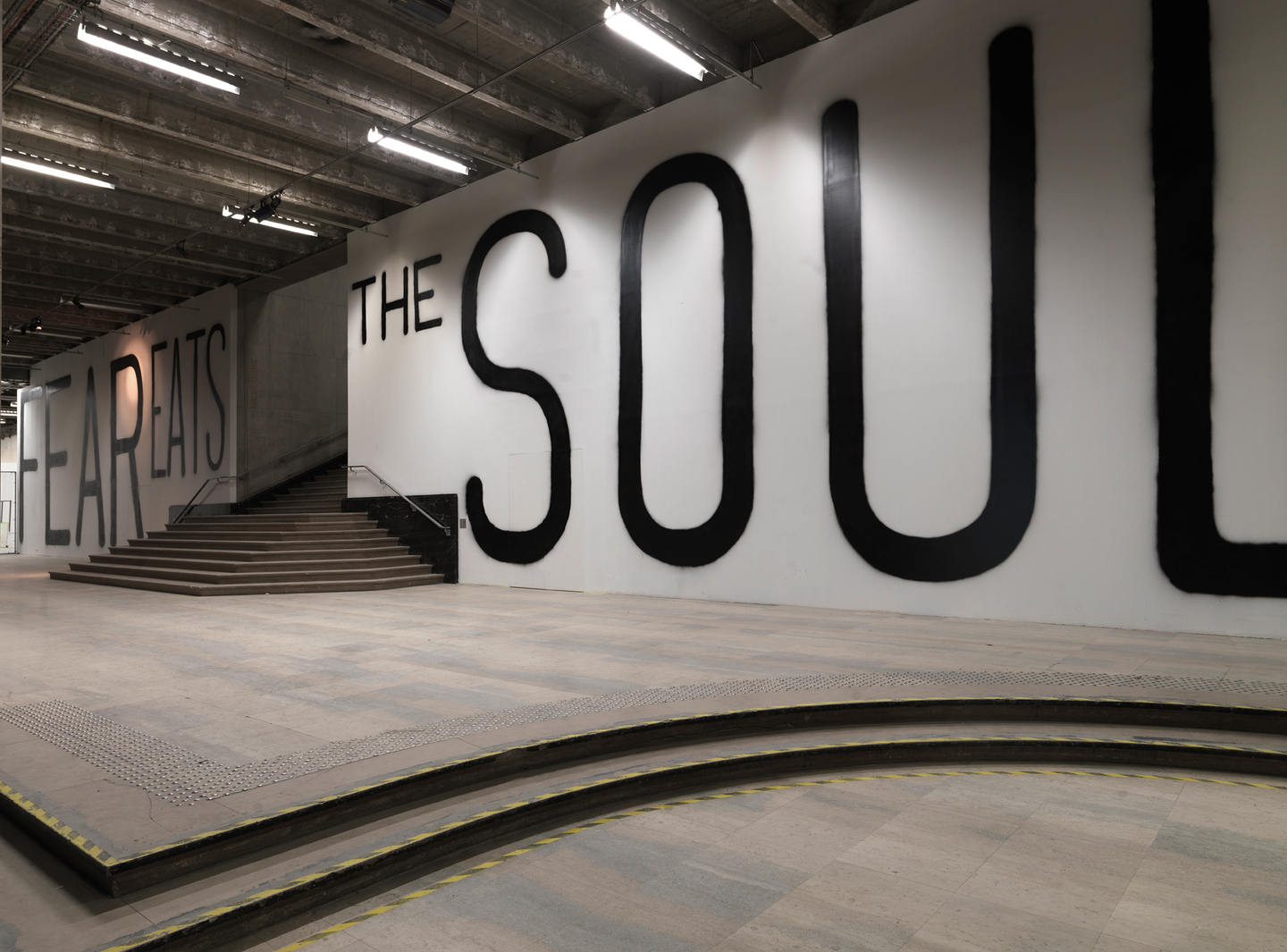Intense Proximité: Une anthologie du Proche et du Lointain, ed. Okwui Enwezor (CNAP and Artlys, 2012), 112.
A tradition that leads to “thought-continents” that are “effective for all and at all times,” in the words of Nicolas Bourriaud, to which he opposes his “altermodern” model of archipelago and constellation. Intense Proximité, 62.
The main website dedicated to the event has been taken down, but the La Triennale journals are accessible on the Centre National des Arts Plastiques website →. As of this writing, the Palais de Tokyo still has a webpage about the event. It includes three images of the exhibition and a short paragraph on the curatorial concept (with no reference to guest artists or access to the exhibition guide) →.
A term Enwezor used to explain the absence of the French artistic scene from Documenta 11: “It would have been an easy choice to give Paris a privileged position in this edition of Documenta. However, discussing art in Paris and in New Delhi is different. I thought it preferable not to show something that already represented an excess of ‘cultural capital’ in Kassel.” Okwui Enwezor, “Triennale de Paris,” interview by Paul Ardenne, Art Press, May 12, 2012.
This interview would not have been possible without the invaluable involvement of Émilie Renard and Claire Staebler. I am also grateful to Serubiri Moses for inviting me to take part in this series. This investigation has given me the opportunity to nurture one of my intellectual obsessions—related in part to my immigrant journey from France to the United States—by putting into perspective French intellectual and artistic traditions. I wish to thank James Merle Thomas, a close collaborator of Enwezor and editorial director of the La Triennale catalog, who took the time to discuss Enwezor’s work philosophy with me. I am also grateful for the help of Yoann Gourmel, director of publics and cultural programming at the Palais de Tokyo, who shared with me the La Triennale press review put together by the art center’s team.
Intense Proximité, 11.
Intense Proximité, 29.
Intense Proximité, 34.
A recurring notion in Enwezor’s catalog text. He refers in particular to Mary Louise Pratt, who defines “contact zones” as social spaces where disparate cultures clash and modern antinomies confront each other. Intense Proximité, 24.
Aurélie Romanacce, “Expo sans frontière,” Arts Magazine, June 2012.
“Even my initial sympathy with this attempt at a political project, directed through contemporary art and culture, could not reconcile the schism in the French debate about identity and its place in a supposedly secular society. I took the fact that this strategy of territorialized exploration of the French artistic scene and its yet unremarked extraterritorial projection to the world is largely untenable.” Enwezor in Intense Proximité, 35.
Intense Proximité, 25.
Okwui Enwezor, “Intense Proximity,” interview by Rahma Khazam, Flash Art, January–February 2012, 118.
Hal Foster, “The Artist as Ethnographer?,” in The Traffic in Culture: Refiguring Anthropology and Art, ed. George E. Marcus and Fred R. Myers (University of California Press, 1995). Enwezor’s essay “Travel Notes: Living, Working, and Travelling in a Restless World,” written for the 2nd Johannesburg Biennale (1997), connects the work of the curator with that of the ethnographer: “My perspectives have been enriched and broadened by moments of contact, which in the discipline of anthropology will address the rather problematic connotation of doing ‘fieldwork.” Trade Routes: History and Geography, ed. Okwui Enwezor (2nd Johannesburg Biennale 1997), 9.
“The significance of ‘Magiciens de la Terre’ in terms of modernism or postmodernism and its postcolonial or neocolonial position continues to be debated. The nature of its globalism is the subject of ongoing analysis in these debates, and its ambition to present worldwide internationalism is generally acknowledged—if often with caveats—as radical for its place and time.” Lucy Steeds, Making Art Global (Part 2): Magiciens de la Terre 1989 (Afterall Books, 2013), 25.
“Magiciens” was the starting point for a discussion on global exhibitions between Enwezor and other art professionals, including Catherine David and Hans-Ulrich Obrist. See Tim Griffin et al., “Global Tendencies: Globalism and the Large-Scale Exhibition,” Artforum International 42, no. 3 (November 2003). For an analysis of Enwezor’s take on “Magiciens” and the connections between La Triennale and this historic exhibition, see Steeds, Making Art Global (Part 2), 84–85, 92.
A reflection on the institution’s history and its shortcomings was carried out at the Palais de Tokyo under the initiative of its president Guillaume Désanges, who published A Small Treatise on Institutional Permaculture →. Excerpt: “Agricultural permaculture begins with the idea that there is no such thing as soil neutrality. Every terrain is different, thus one does not sow in it before getting to know it. At the Palais de Tokyo, our soil is our architecture and our history. A rich and chaotic history, exciting and epic, which intersects with that of French cultural policies since the beginning of the 20th century. To get to know more about this soil, we’ve launched a project called ‘Le Grand désenvoûtement’ (The Great Disenchantment), loosely inspired by institutional psychotherapy, a theory that reflects on institutional pathologies that need to be treated, as psychic beings would be.”
Translated from the French by Hellene Aligant.
